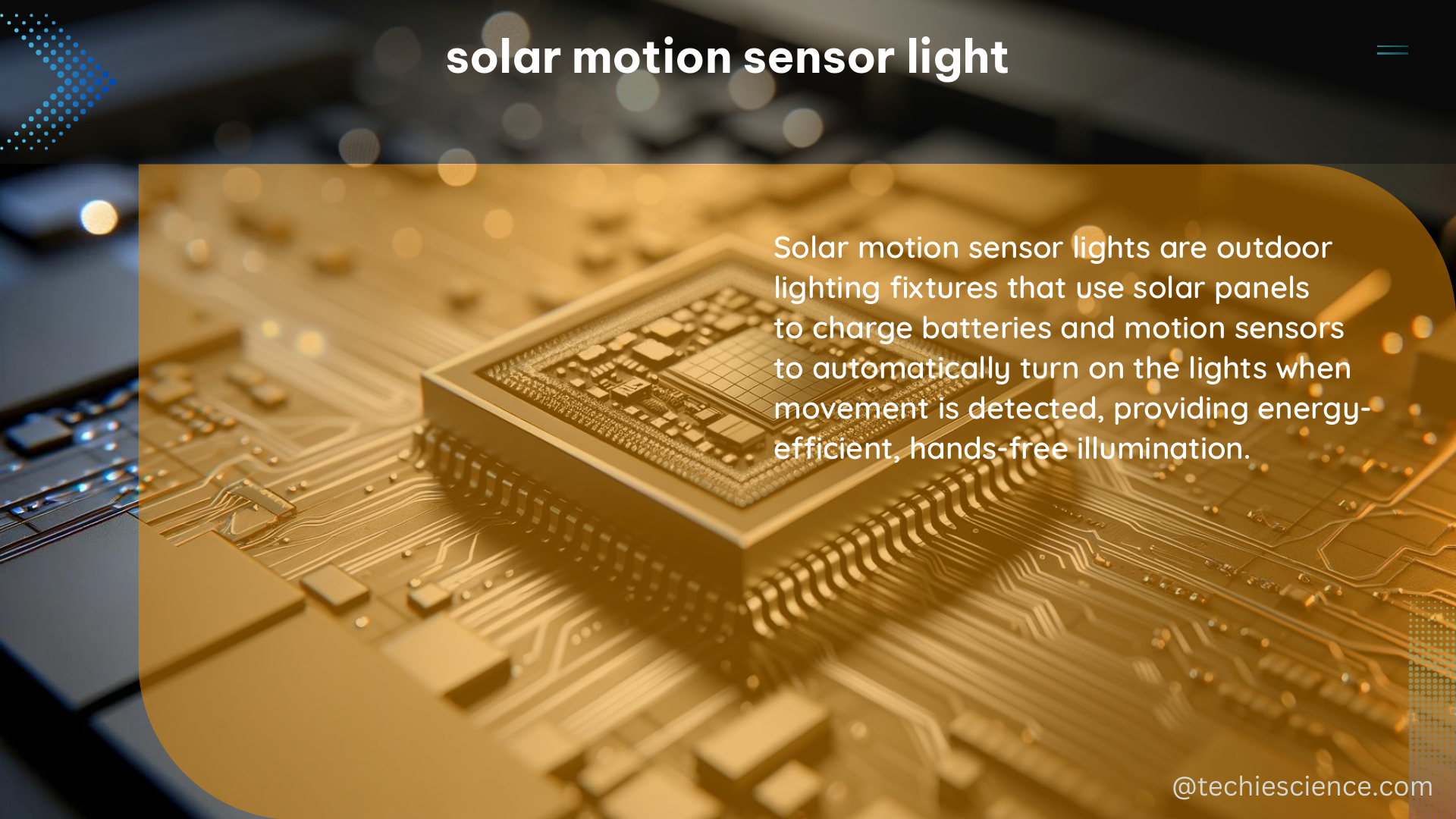Solar motion sensor lights are a type of lighting system that utilizes solar power and motion detection technology to provide energy-efficient illumination when needed. These lights are designed to activate when movement is detected, ensuring that the light is only used when necessary, thereby significantly reducing energy consumption compared to traditional lighting systems.
Understanding the Basics of Solar Motion Sensor Lights
Solar motion sensor lights typically consist of three main components: a solar panel, a motion sensor, and a rechargeable battery. The solar panel captures sunlight and converts it into electrical energy, which is then stored in the battery. When the motion sensor detects movement within its designated range, it triggers the light to turn on, providing illumination for a predetermined duration before automatically turning off to conserve energy.
Types of Motion Sensors

There are several different types of motion sensors that can be used in solar lights, each with its own unique characteristics and applications:
- Infrared (IR) Sensors: These sensors detect heat signatures emitted by living beings, such as humans and animals, and are commonly used in outdoor security lighting applications.
- Microwave Sensors: These sensors emit continuous microwaves and measure the reflection pattern to detect movement. They are less affected by environmental factors, such as temperature and humidity, compared to IR sensors.
- Hybrid Sensors: Some solar lights utilize a combination of IR and microwave technologies, known as hybrid sensors, to enhance accuracy and reliability in motion detection.
The range and sensitivity of these motion sensors can be adjusted to suit the specific needs of the installation. For example, a wider range may be desirable for lighting a large outdoor area, while a narrower range may be more appropriate for a small indoor space.
Technical Specifications of Solar Motion Sensor Lights
When selecting a solar motion sensor light, it is important to consider the following technical specifications:
-
Solar Panel Size and Type: The size and type of the solar panel will determine the amount of sunlight that can be captured and converted into electrical energy. Larger solar panels generally have a higher power output, while smaller panels may be less effective in low-light conditions.
-
Battery Capacity and Type: The capacity and type of the rechargeable battery will determine how long the light can remain illuminated when it is not receiving sunlight. Larger batteries can store more energy and provide longer periods of illumination, while smaller batteries may need to be recharged more frequently.
-
Motion Sensor Range and Sensitivity: The range and sensitivity of the motion sensor will affect how far away the light can detect movement and how responsive it is to small movements. A wider range and higher sensitivity may be desirable in some cases, while a narrower range and lower sensitivity may be more appropriate in other situations.
-
Light Duration: The duration of the light’s activation can be adjusted to suit the specific needs of the installation. Some solar lights offer multiple settings to choose from, while others may have a fixed duration.
DIY Installation and Maintenance
Solar motion sensor lights are generally straightforward to install, with most models coming with mounting hardware and detailed instructions. However, it is crucial to ensure that the solar panel is installed in a location where it will receive adequate sunlight and that the motion sensor is positioned correctly to detect movement effectively.
Regular maintenance, such as cleaning the solar panel and checking the battery’s charge level, is also essential to ensure the long-term performance and reliability of the solar motion sensor light.
Conclusion
Solar motion sensor lights offer a range of benefits, including energy efficiency, convenience, and security. By understanding the different types of motion sensors, the technical specifications, and the proper installation and maintenance procedures, you can select and install the perfect solar motion sensor light for your needs. With the right solar motion sensor light, you can enjoy reliable and energy-efficient illumination for years to come.
References:
– How Do Motion Sensors on Solar Lights Work?
– Infrared Sensor Technology for Motion Detection in Outdoor Lighting Applications
– How Light Sensors Work

The lambdageeks.com Core SME Team is a group of experienced subject matter experts from diverse scientific and technical fields including Physics, Chemistry, Technology,Electronics & Electrical Engineering, Automotive, Mechanical Engineering. Our team collaborates to create high-quality, well-researched articles on a wide range of science and technology topics for the lambdageeks.com website.
All Our Senior SME are having more than 7 Years of experience in the respective fields . They are either Working Industry Professionals or assocaited With different Universities. Refer Our Authors Page to get to know About our Core SMEs.